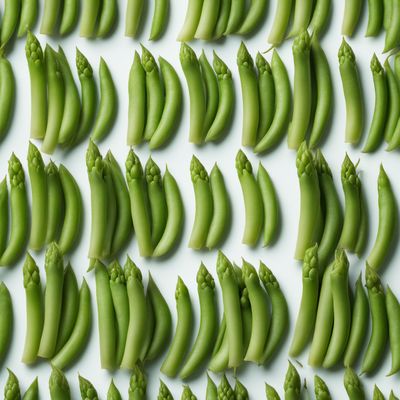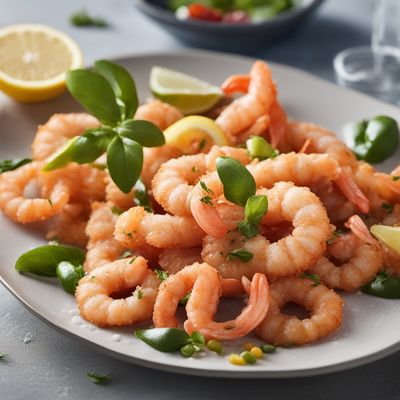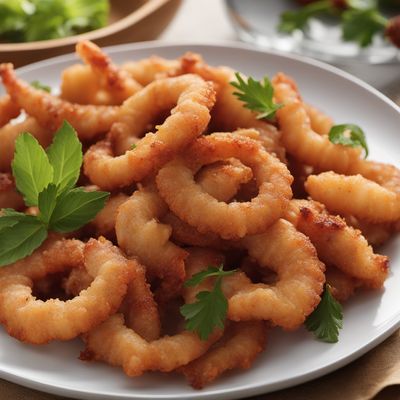
Ingredient
Azuki beans (with pods)
The Versatile Azuki: A Nutrient-Packed Legume with a Crunch
Azuki beans are small, reddish-brown legumes that are commonly used in Asian cuisine, particularly in Japan, China, and Korea. They have a slightly sweet and nutty flavor with a firm texture. When cooked, the beans retain their shape and develop a soft, creamy interior. The pods of azuki beans are edible and provide a satisfying crunch when consumed along with the beans.
Origins and history
Azuki beans have a long history in Asian culinary traditions, dating back thousands of years. They are believed to have originated in China and were later introduced to Japan and Korea. Azuki beans have been a staple ingredient in traditional desserts, such as sweet bean paste, as well as savory dishes like soups and stews. Today, they are widely cultivated and consumed in various parts of Asia and have gained popularity in other regions as well.
Nutritional information
Azuki beans are a nutritional powerhouse, rich in fiber, protein, and essential minerals such as iron, magnesium, and potassium. They are also a good source of antioxidants and B vitamins. Additionally, azuki beans are low in fat and calories, making them a healthy addition to a balanced diet.
Allergens
Azuki beans may cause allergic reactions in individuals with legume allergies. It is important to exercise caution and avoid consumption if you have a known legume allergy. Cross-contamination with other legumes may also occur during processing, so individuals with legume allergies should be vigilant when purchasing and consuming azuki beans.
How to select
When selecting azuki beans, look for beans that are plump, shiny, and free from any signs of damage or discoloration. The pods should be crisp and vibrant in color. Avoid beans that appear wrinkled or have a dull appearance, as they may be old or of lower quality. If purchasing dried azuki beans, ensure that they are free from any signs of moisture or insect infestation.
Storage recommendations
To maintain the freshness and quality of azuki beans, store them in an airtight container in a cool, dry place. If the beans are already cooked, store them in the refrigerator for up to three days. If storing for a longer period, it is recommended to freeze the cooked beans in portion-sized containers. Dried azuki beans can be stored for up to a year in a cool, dark pantry.
How to produce
Azuki beans can be grown in home gardens with proper care and attention. They require well-drained soil and a sunny location to thrive. Sow the seeds directly in the garden or in containers, following the recommended planting depth and spacing. Regular watering and fertilization will help promote healthy growth. Harvest the beans when the pods are fully mature and dry. Shell the beans and store them in a cool, dry place for future use.
Preparation tips
Azuki beans can be used in a variety of dishes, both sweet and savory. In Asian cuisine, they are commonly used to make sweet bean paste, which is a key ingredient in traditional desserts like dorayaki and taiyaki. Azuki beans can also be added to soups, stews, and rice dishes for a nutritious boost. They can be sprouted and used in salads or stir-fries as well. Additionally, the pods of azuki beans can be blanched or stir-fried to add a crunchy element to dishes.
Culinary uses
Azuki beans are widely used in Asian cuisine, particularly in Japan, China, and Korea. They are a staple ingredient in traditional dishes and desserts in these regions. Azuki beans can be found in Asian grocery stores, specialty food markets, and online retailers that cater to Asian ingredients.
Availability
Global availability
More ingredients from this category » Browse all

Sword bean (young pods)
The Versatile Bean of the Tropics

Broad beans (with pods)
The Verdant Gems: Exploring the World of Broad Beans

African locust bean (with pods)
The African Umami

Jack beans (with pods)
The Versatile Legume: Jack Beans with Pods

Yardlong beans (with pods)
The Versatile Veggie: Exploring Yardlong Beans

Mung beans (with pods)
The Versatile Green Gem

Black eyed peas (with pods)
The Versatile Delight: Exploring the World of Black Eyed Peas with Pods

Goa bean (young pods)
The Green Delight: Exploring the Versatility of Goa Bean Pods

Rice beans (with pods)
The Versatile Delight: Exploring Rice Beans with Pods

Stink beans (with pods)
The Pungent Delicacy: Stink Beans

Guar beans (with pods)
The Versatile Guar Bean: A Nutrient-Rich Pod of Possibilities

Vetches (with pods)
The Versatile Vetches: Pods Packed with Potential
Recipes using Azuki beans (with pods) » Browse all

Phla Kung with a Twist
Spicy Thai Shrimp Salad: A Burst of Flavors

Finnish-style Seafood Stew
Nordic Sea Delight: Finnish-style Seafood Stew

Peruvian Spicy Shrimp Stew
Andean Delight: Peruvian Spicy Shrimp Stew

Crispy Greek Fried Calamari
Mediterranean Delight: Crispy Greek Fried Calamari

Southwestern Rainbow Roll
Spicy Fiesta Sushi Roll

Peruvian Seafood Jalea
Crispy Delights from the Peruvian Seas

Hawaiian-Style Pork Cutlet with Pineapple Salsa
Tropical Delight: Crispy Pork Cutlet with Zesty Pineapple Salsa

Arroz a la Tumbada with a Twist
Mexican Seafood Rice Delight

Crispy Italian Seafood Medley
Mare Nostrum Delight: Crispy Italian Seafood Medley

Tanzanian-style Mixed Fried Seafood
Zesty Zanzibar Seafood Delight

Winter Melon Soup with Shrimp and Tofu
Savory Delight: Winter Melon Soup Infused with Shrimp and Tofu

Lowcountry Breakfast Delight
Southern Charm Breakfast: A Lowcountry Twist on the Irish Classic